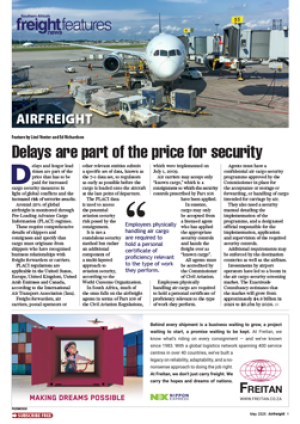A CAREFULLY structured insurance package could become an investment of sorts if it is properly designed to suit a client's risk management needs, says Price Forbes deputy m.d. Hugh Reimers.
Insurance is not a cost effective method to finance low cost predictable losses, he says.
Companies that have a predictable pattern of loss over a year end up paying a large excess and increasing premiums which erodes the value of their insurance cover.
Reimers says the trend is for insurers to evaluate a company's risk profile to determine a claims history, and thereby work out its expected losses over a year.
Losses are inevitable in a business like the freight industry. However, these do not fluctuate wildly from year to year and it is therefore possible to establish a pattern.
Reimers says insurers are offering packages that allow clients to self insure the predictable portion of this risk themselves while buying in the conventional market insurance against catastrophic or unpredictable loss.
If a freight operator regularly loses R50 000 a year in damaged and stolen goods he will be expected to pay a premium which will not only fund these losses but will take the insurer's overhead expenses into account as well.
Reimers suggests the company carry the entire predictable loss itself and only insure against unexpected disaster that could impact on the profits of the business.
The bottom line savings in premium over a period of time can be considerable, he says.
The company would do better to spend its insurance money on tightening up its logistics and improving its loss control ratio, viewing insurance as the last resort - and an expensive option at that.
Risk management's job is to reduce the client's overall cost of risk overtime, he says. This invariably means looking for alternative non-conventional solutions to our clients' risk related problems.
